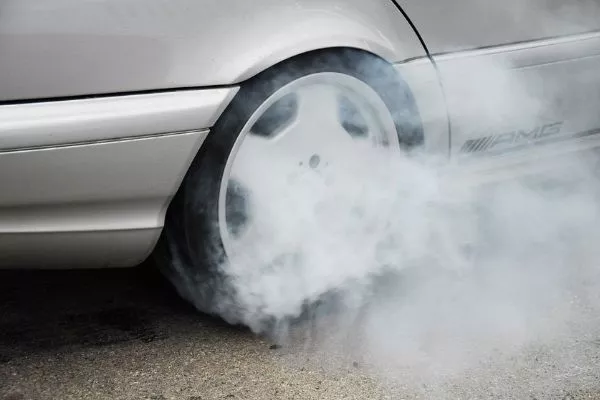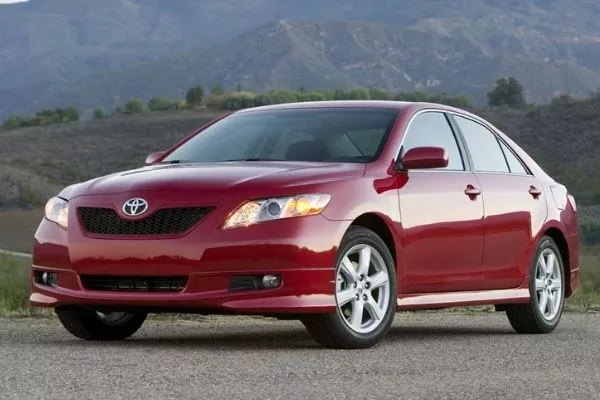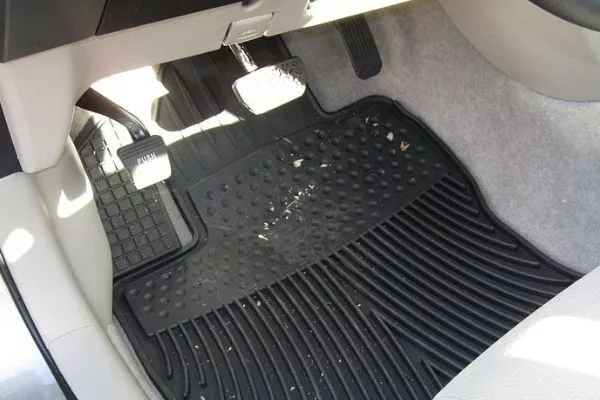S-U-A. Three letters that will send chills down some drivers’ spines and keep them from taking the wheel. There’s been quite a lot of debate on whether or not this phenomenon exists, and carmakers deny that it’s a thing while simultaneously introducing features that reduce its likelihood of newer models.

A car speeding up when you don't want it to is a sign of trouble
Every now and then, an incident involving a vehicle (more often than not equipped with an automatic gearbox) supposedly running wild on its own finds its way to social media. This will invariably inspire anecdotal claims of a similar nature, no matter how tenuous the connection (“I heard from my neighbor’s cousin’s friend’s acquaintance’s dog groomer”) and eventually snowballing into negative public perception of the model (and brand) involved.
At a time when newer automobiles are already coming so equipped as to make driving increasingly convenient, does SUA still fall within the realm of possibility?
What is SUA?
SUA is short for Sudden Unintended Acceleration, a technical term to describe an instance where the vehicle unexpectedly moves under high power, whether from a standstill or at very low vehicle speeds. This is usually accompanied by reduced or a complete absence of the vehicle’s ability to stop despite driver input, indicating a failure of both its acceleration and braking systems.
In practical terms, the vehicle is instantly transformed into an uncontrollable, unstoppable projectile, and the only recourse is to have it slam into the nearest available obstacle in the hopes of bringing it to a halt. Some of the immediate effects include property damage and bodily injuries, especially for those unfortunate enough to have gotten in the vehicle’s way.
What are the possible causes of SUA?
There are several reasons behind SUA, some more common than others realize (or care to admit).
- Pedal misapplication – Basically attributable to driver error, this refers to mistakenly stomping on the accelerator pedal when the driver intended to step on the brakes. Motorists who are smaller in stature are reportedly more at risk since their smaller limbs make them prone to stepping on the wrong pedal. The design and layout of the pedals will also play a part, such as pedals that are not sufficiently spaced apart, or the accelerator pedal is too large.
- Obstructed pedals – This usually happens when the proper operation of the pedals is prevented by an external object, such as unsecured and overly thick aftermarket floor mats. Internal factors include sluggish throttle butterfly valves that suddenly pop out after increased driver input, resulting in an excessive surge of power.
- Electronic glitches – With drive-by-wire technology now common among newer cars, mechanical linkages have been largely replaced by electronic ones. While not a common occurrence, there are still opportunities for these electronic links to fail at some point, resulting in a vehicle breaking out of control. Note, however, that modern cars are designed with redundancies to keep situations like this in check, with the engine programmed to reduce power by default in case of errors.
How often does it happen?
Oddly enough, while it’s easy to allege vehicle defects as the cause in a given instance of SUA, a technical examination often reveals that it’s next to impossible to duplicate the factors that caused it (or at least according to how a driver would typically narrate the scenario). In order to establish some sort of credibility for the claim, the incident should be repeatable with the same unit involved, not merely relying on separate events involving a similar model that could have been operating under a different set of conditions.

Allegations of SUA on the Audi 5000 tarnished the carmaker's reputation in North America
The first known instances of SUA happened with the Audi 5000 from 1982 to 1987, resulting in 700 accidents and 6 deaths in the U.S. A televised dramatization of one such incident resulted in an adverse public reaction to the brand. It was eventually revealed that the portrayal was staged to deliberately paint Audi in a bad light, as tests by the carmaker showed that the car would simply stall if the brakes were applied. This did little to save the Audi 5000’s sales and resale value.

The Camry figured prominently in SUA complaints against Toyota in the U.S. market
Even Toyota was no stranger to the SUA affair, having suffered petitions sent by customers over supposed instances of unintended acceleration from 2002 to 2009. Authorities found no evidence of vehicle defects, even after poring over 280,000 lines of software code. Nevertheless, the carmaker had to fork over US$ 1.2 billion in fines over allegations of a cover-up, separate from a similar amount made in settlement to Toyota owners claiming loss of resale value.

The Mitsubishi Montero Sport was at the center of SUA reports in the Philippines
The Philippines has its own SUA allegations with the Mitsubishi Montero Sport, specifically the second-generation model. The debate on whether or not the SUV was prone to SUA reached a point where Montero owners organized a motorcade in 2016, dubbed the Ride of Confidence, as a public manifestation of support for their chosen model.
What happens now?
Short of buying a new car altogether, it pays for drivers to be extra mindful of their habits behind the wheel, checking whether or not their reflexes are up to snuff and if they’re using the right accessories for their model. The veteran motorists especially should take the time to reevaluate how much they know their vehicle, given that incidents of SUA seem to involve more experienced drivers than novice ones.

Minimizing the risk of SUA is as simple as not taking your habits behind the wheel for granted.
We’re not saying that carmakers are perfect and free from blame, but it’s not exactly human nature for a driver to admit stepping on the wrong pedal (or using inappropriate aftermarket accessories), especially with potential costs arising from property damage. Even insurance companies encourage you not to admit any fault as standard procedure in the event of an accident, symptomatic of a toxic driving culture where everyone else makes mistakes – except you.
Truth be told, that’s scarier than any runaway vehicle, SUV or otherwise.
Read more motoring insights at Philkotse.com.
Recent posts
- Toyota new safety feature Mar 22, 2021
- Stepping on clutch during stop Mar 01, 2021
- Safe driving tips: How important is stopping distance? Jan 08, 2020
- Safety tips: How to drive when your car brakes are malfunctioned Nov 30, 2022
- Auto emergency: Do and Don'ts of fixing a car's stuck gas pedal Oct 16, 2020












